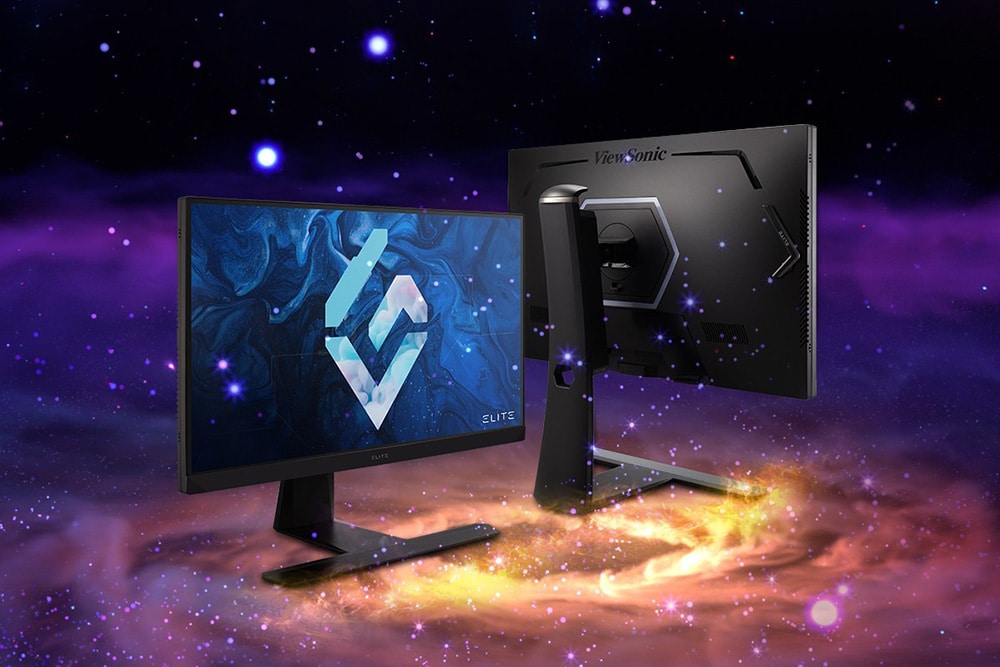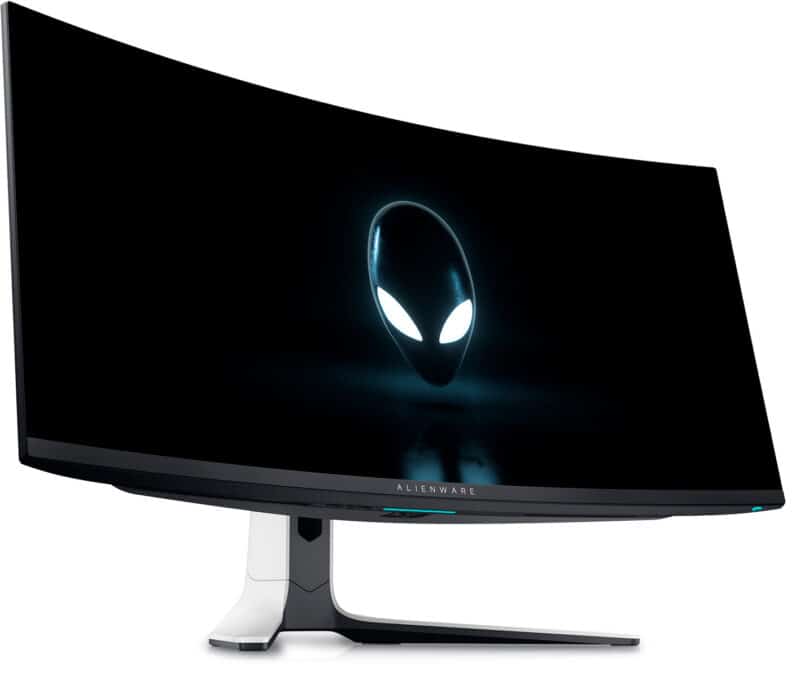OLED News and Rumours Round-up for 2025
Originally published 24 November 2024, last updated 6 December 2024

CES 2025 is coming up very soon in early January and it’s always an exciting time for the display market. We will be covering all the news as it happens, and will be on hand at the event to experience the new products hands on, and provide coverage from various manufacturers. The best place to ask questions you might have of the new screens being released is on our Patreon page, and we will try and make sure we cover those questions when we are with the product teams and answer them in our upcoming content from the event.
In the meantime we wanted to cover various bits of OLED news and some rumours ahead of the event in this round-up. Newest additions to this article at the top.
Looking to buy a new OLED now?

Check out our round up of our current recommendations for the best OLED monitors you can buy right now, by size.
ViewSonic Rumoured to be Launching a 520Hz OLED Monitor

There’s very little information about this monitor at the moment but there are some early rumours that ViewSonic will showcase a new OLED monitor with a 520Hz refresh rate at CES in January. The reports are that this will be a 27″ sized monitor with a 2560 x 1440 resolution, 1ms MPRT spec and FreeSync Premium support.
We heard news recently that Samsung would be producing 500Hz QD-OLED panels (covered further down this news piece), so it might be that those are actually going to end up as 520Hz and that’s what is being used here? The other possibility is that it’s using the 480Hz WOLED panel that is already in mass production from LG.Display, perhaps with an overclock applied to squeeze another 40Hz out of it. It seems unlikely that LG.Display would increase the native refresh rate of this panel by a small 40Hz, especially when it was only produced very recently anyway.
Time will tell what panel tech is used here but our best guess would be an overclock to the 480Hz WOLED panel, given ViewSonic have so far only partnered with LG.Display for their OLED monitors, like with their 27″ XG272-VK and the additional new 32″ model being released that is covered below.
Also planned is a 32″ 4K 240Hz dual-mode OLED monitor

Apparently ViewSonic are also planned to release a separate 32″ 4K 240Hz OLED monitor with Dual-mode support (for 1080p @ 480Hz) which some news sites have confused with the first 27″ 1440p 520Hz monitor. This is a separate model and will feature LG.Display’s WOLED panel, and it’s likely this is the XG323-4K that we brought you news of back in July when it was announced for the Chinese market.
Source: Computerbase.de
Further info and specs on these new screens when we get it.
Asus Tease the New ROG Swift PG27UCDM, an Expected New 27″ 4K OLED Monitor

Asus have teased the upcoming launch of a new OLED monitor in their ROG Swift range via a post on their Instagram account (included below). They start by poking fun at their own naming conventions, which to be fair aren’t as vague and random as some other manufacturers. The post then goes on to list the ‘ROG Swift PG27UCDM’, a screen not currently available or previously known.
We can draw conclusions based on this naming given it’s very similar to their PG32UCDM. We expect this to be a 27″ sized screen, with a 3840 x 2160 “4K” resolution and built around a Samsung Display QD-OLED panel. This should offer therefore a 240Hz refresh rate, but the update to the 4K resolution will provided an increased pixel density to ~166 PPI for sharp, crisp and detailed images. It should also include the standard semi-glossy screen coating from this panel technology.
More info on this new screen when we get it.
New Dell Alienware 27″ and 34″ Monitors Spotted

Added 5 December 2024
Two new Dell Alienware monitors have recently been registered by the company, leading to rumours that these will be new OLED offerings. This seems likely given the large investment in this space by manufacturers. There’s very little information yet on the two potential new models, but our best guess would be as follows.

We expect the AW2725Q is a new 27″ 3840 x 2160 “4K” resolution model with 240Hz refresh rate, given the ‘Q’ was used for their AW3225QF 32″ 4K model instead of the “D” used for their 27″ 1440p AW2725DF. Likely built around a Samsung QD-OLED panel again with a flat format and the semi-glossy screen coating. This would offer a new higher pixel density and resolution in the 27″ space that many people have been waiting for. We think this is an extremely likely scenario for this particular model.

The AW3425DW looks like it will be an update to their previous AW3423DW and AW3423DWF models, probably built around one of the newer 240Hz refresh rate QD-OLED panels like that used in existing displays like the MSI MPG 341CQPX for instance. This would have a 3440 x 1440 resolution, 1800R curvature and 240Hz refresh rate (but note that it still has the same pixel shape and structure as the original 175Hz gen 1 panel as there’s new 34″ panel with the newer QD-OLED pixel structure produced at this time).
Some people may be hoping for an updated resolution as well, but as far as we know the panel production for those expected future 34″ 5120 x 2160 resolution panels is not scheduled until at least Q4 2025 (next year) and so that is extremely unlikely. It’s far more likely to be the updated 34″ 3440 x 1440 @ 240Hz panel. More info on those other higher resolution OLED panels in our latest video on the topic here.
Could these new screens include the G-sync MediaTek scaler?
One further tantalising possibility which is only a guess at this time but seems possible, is that perhaps these two new screens could incorporate the NVIDIA G-sync module, or rather the new MediaTek scaler which supports the NVIDIA G-sync features. We don’t usually like to speculate to this degree but given this news piece is all about CES rumours and news, we should talk about the potential clues in the naming conventions.

If you look back at Dell’s previous OLED monitors, their original AW3423DW (34″ ultrawide) was the first OLED monitor to market and is the only OLED monitor released to date in fact that used the traditional NVIDIA G-sync hardware module. No other monitors have used this at all since. Their other OLED monitors all have an “F” in the name, like the AW3423DWF, AW3225QF and AW2725DF – with the F perhaps signifying “FreeSync”, since these screens all use standard adaptive-sync for VRR, and do not have the G-sync module. The “F” in the naming convention certainly distinguishes those models from the original AW3423DW anyway.
You will note that the two newly certified screens also do not have the F in the name, with the AW2725Q and AW3425DW, which could potentially suggest that they would not be the “FreeSync” versions, but instead feature Native NVIDIA G-sync support. Nowadays that would be delivered via a third party MediaTek scaler rather than a proprietary NVIDIA chip (as explained in our article here). But this would still require co-development and testing with NVIDIA, bringing potential features like G-sync VRR that could help offer better VRR range and performance, less OLED VRR flicker, super-low input lag, and maybe even features like Reflex Latency Analyzer perhaps. The NVIDIA features that can be incorporated in to this chip are optional, so time will tell. Given Dell have worked with NVIDIA in the past for their original AW3423DW monitor, it seems highly possible they could have done the same here for these new models.
We may be off the mark with this prediction so please don’t take this as anything more than a rumour and speculation at this time, but the naming schemes of the two new models perhaps suggest this collaboration and G-sync integration.
More news on the new Dell monitors when we get it.
45″ ultrawide OLED monitors with higher resolution

Earlier in 2024 we brought you exclusive roadmap news which covered LG.Display’s OLED panel plans for the coming years. One of the most interesting panels on this plan in the shorter term was a 45″ ultrawide module with an increased 5120 x 2160 resolution, or WUHD as it’s also known.

At the time we said this panel was due to go in to mass production in Dec 2024, with monitors expected to be released in Q1 2025 as a result. The latest we have heard is that panel production is pretty much on track, slipped slightly in to early Q1 but that monitors using this panel are likely to be released around April / May 2025. We’ve not seen any monitors formally announced yet using this panel, but we expect to see some at CES.
LG 45GX950A coming soon?
In fact some certification information for a new LG Electronics monitor has appeared online, giving hope that this could be one of those new WUHD resolution OLED monitors:

There’s very little information about the screen at the moment other than a model name (the LG 45GX950A) and a certification date from 20 Nov 2024. This page lists low blue light certification for panels and mentions an “LG 450*W/D*” panel which may also be linked.

Spec expectations
We await official specifications and details about this new LG Electronics monitor but our expectations are that it would have the same steep 800R curvature as the previous 3440 x 1440 resolution LG.Display 45″ panel (although bendable options are potentially viable as Corsair proved with their monitor). It’s likely it would have a 240Hz refresh rate as well, although we know LG.Display are also planning to develop a 165Hz refresh rate version of the panel. Our bet is on 240Hz.

We also know that this will be one of LG.Display’s newer generation WOLED panels with the updated RGWB sub-pixel layout for improved text rendering. We’ve seen this layout already on their 32″ 4K and 27″ 1440p 480Hz panels from this year, so you can read our views on those in our recent reviews of models like the Asus ROG Swift PG32UCDP and Asus ROG Swift PG27AQDP respectively.
With a 5120 x 2160 resolution on a 45″ ultrawide panel, the pixel density would be around 123 PPI, a little better than the 27″ 1440p panels (111 PPI) and certainly miles better than the previous 45″ ultrawide panels (83 PPI). It’s not as dense though as the 32″ 4K (140 PPI) or forthcoming 27″ 4K (166 PPI) panels. Still, this is a massive resolution on a large screen size which will give users a large desktop area to work with, and an immersive screen for gaming and multimedia. We’re sure it will be very popular. It can also natively support 4K sources (3840 x 2160) without any scaling across pixels, with black borders down the sides if needed for games consoles and other external devices.
In terms of screen coating, we expect this to have the same matte AG coating as previous LG.Display WOLED panels. At this time we are not aware of any plans from them to extend their native glossy coating from their 27″ 1440p 240Hz panel (Asus ROG Strix XG27AQDMG) to any other sizes or options. Maybe in time there will be more, but right now we’ve not seen any information on any. For HDR we expect it to continue to have the current 1300 nits peak brightness spec too.
When it comes to the monitors themselves, they are going to need to include DisplayPort 2.1 connectivity as 5120 x 2160 @ 240Hz is beyond DP 1.4 even with DSC. It is however too much for uncompressed video over even the maximum DP 2.1 UHBR20 tier, requiring 90.94 Gbps which is beyond the spec of DP 2.1 quite a way. With DSC therefore being needed, this can then fit within lower tier DP 2.1 if necessary, even using UHBR10 (40Gbps) links.
So, DP2.1 should definitely be featured on these monitors, but it is possible that they will only include UHBR10 or UHBR13.5 tiers since both can support the res/refresh rate, and UHBR20 would be unnecessary as even that can’t accommodate an uncompressed, DSC-free signal. Using lower tier UHBR is perfectly acceptable in these cases and could be easier and cheaper to develop and implement for manufacturers. Loads more info on DP 2.1 and its challenges here.
500Hz QD-OLED Panels

We have not had anything formal from Samsung Display at this time, but expect to have more information on their 2025 QD-OLED plans and developments at CES. For now we are seeing rumours that Samsung Display will be launching 27″ QD-OLED panels with a 2560 x 1440 resolution (the same res as their current 3rd gen panels of this size) and an increased 500Hz refresh rate. This would put their panels just slightly ahead of LG.Display’s current 480Hz WOLED offerings, the panel used in screens like the Asus ROG Swift PG27AQDP that we have already reviewed and models from Sony and LG Electronics for instance. According to the report, Samsung Display are in discussion with major monitor manufacturers to adopt this panel for release in the first half of 2025.
We would take this as a rumour at this stage until something is more formally announced, but it seems very likely that refresh rates in this range would be launched by Samsung in their ongoing competition with LG.Display. 500Hz would be the fastest OLED monitor panel available, but then it’s also very possible LG.Display could be announcing something even higher for 2025. That’s what happened in 2024 when Samsung Display launched their 360Hz QD-OLED panels as the “fastest”, only to be surpassed soon after by LG.Display’s 480Hz panels. More info on Samsung’s QD-OLED panel plans for 2025 as soon as we get it.
Source: etnews.com
27″ 4K OLED monitors
A lot of people have been waiting for these to appear, but it seems likely that we will finally see 27″ OLED monitors released in 2025 that have a higher 3840 x 2160 “4K” resolution. This would offer the highest pixel density from an OLED monitor panel currently available at ~166 PPI as the panels are accurately measured at 26.5″. This would provide higher levels of detail and improve image clarity, likely also improving text rendering like it did on the 32″ 4K panels already released in 2024.
So far we’ve not seen anything from any of the main manufacturers, but we could well see this at CES. Some information shared by Chinese reviewer Littlesnowman suggests that the brand SDC (aka Light Soul) are planning to release a display next year with this kind of panel.

The leaked information shown above lists their “27X1U Extreme” displays as featuring a QD-OLED panel that offers a 3840 x 2160 resolution and a 240Hz refresh rate. This suggests a Samsung Display 27″ 4K panel will be used, something that we already knew was in plan when we covered panel roadmaps earlier this year. It looks like Samsung Display will be the first of the two OLED panel manufacturers to market with a panel of this size and resolution.
We look forward to hopefully seeing more information on 27″ 4K OLED panels for CES.
More DisplayPort 2.1 adoption

Linked to the above news, you might note that the Chinese brand SDC ’27X1U Extreme’ display has an option for DisplayPort 2.1 connectivity. It seems logical to expect to see the adoption of this new connection type on new displays increase in 2025, especially as NVIDIA have long been rumoured to be releasing their next-gen RTX 5090 series cards with DP 2.1 included. That is unconfirmed at this time but hopefully we will hear news from NVIDIA soon for CES 2025, but given AMD have already adopted DP 2.1 in some capacity (UHBR13.5 on their consumer cards, UHBR20 on their pro cards) it seems very probable that NVIDIA will finally introduce this new connection to their cards, hopefully at the full UHBR20 (80Gbps) speeds.
There are lots of reasons why DisplayPort 2.1 has seen slow adoption, and many remaining challenges around the spec, scalers and cabling. We’ve got loads more information about DP 2.1 in our recent video here.

With the likely increase in graphics card support for DP 2.1 in 2025 it’s logical to expect to see the connection more widely adopted in the monitor space too. We’ve seen a couple of high-spec OLED monitors released in recent months that are advertised with DP 2.1 including the 480Hz Sony INZONE M10S and LG 27GX790A although the specs on offer have been confusing and perhaps even misleading.
Sony’s screen for instance supports only the lowest UHBR10 (40Gbps) tier, while it looks like LG’s version supports the slightly higher UHBR13.5 (54Gbps) tier. Neither of which allow for an uncompressed 1440p @ 480Hz signal, and therefore feel a little pointless given the reason people want DP 2.1 on these specs is to try and avoid needing to use DSC (Display Stream Compression). The challenges with the different tiers, and more info on DSC is included in detail in our DisplayPort 2.1 video.
For DisplayPort 2.1 to be truly valuable and interesting in the monitor space it needs to either be used for:
- Display specs that could not otherwise be possible with DP 1.4 + DSC. Like for instance 4K 360Hz (currently nothing announced for that before you get excited!)
- Supporting currently display specs with an uncompressed video signal and to avoid using DSC – 4K 240Hz and 1440p 480Hz are both possible but would require the full UHBR20 (80Gbps) bandwidth tier.
We expect to see DisplayPort 2.1 more widely included with new top-end monitors in 2025, but pay close attention to the UHBR tiers and specs to ensure it’s going to deliver what you expect and want. We will continue to include this in our news and reviews for any screen we see advertised with DP 2.1.
3x Brighter and 5x Longer Lasting OLED Displays?

In some recent news Samsung Display, Visionox and Japan Display are now exploring a new “breakthrough” solution that could significantly improve OLED displays of all sizes including smartphones, tablets, PC’s and eventually TV’s. According to the report the company currently supplying most OLED display makers with deposition manufacturing solutions, Applied Materials, has announced its ‘MAX OLED’ maskless manufacturing solution.
Applied’s MAX OLED solution makes it easier to scale OLED manufacturing from Gen 6* glass substrates to Gen 8* substrates, which are approximately two times larger, and beyond. In addition, the MAX OLED solution deposits OLED materials in a new way that increases pixel brightness and resolution, reduces display energy consumption, and lengthens display lifetime.
The press release states that: “Applied Materials will supply a MAX OLED solution to Samsung Display, a leading global manufacturer of OLED and QD-OLED panels. Samsung Display will be bringing in an alpha system to assess this new technology.”

Applied Materials are claiming that this new approach can increase brightness potential by 3x, improve longevity by 5x, increase pixel density to 2000 PPI and reduce power consumption by 30%. The technology will also apparently let display makers produce all types and sizes of OLED panels from a single factory for the first time.

OLED displays are difficult to manufacture because the materials used to emit red, green and blue are fragile and ruined by any exposure to air or moisture. Applied’s MAX OLED solution is a breakthrough technology that deposits and encapsulates each pixel individually using a specially designed maskless process. Applied’s approach is precise, fast and superior at maintaining the purity of delicate OLED materials. Applied’s proprietary solution uses selective deposition to enable excellent pixel placement accuracy, more than doubling the amount of OLED material per area as compared to previous technologies. There’s lots more information about the process and equipment in their press release here.
Some of these claims around improvements will relate to smartphone or tablet panels, but it will be interesting to see what impact this has for monitor panels in the future. We are all for improvements in these areas, but don’t go expecting incredible jumps in monitor panel brightness, lifespan or resolution just yet. If the technology works as advertised, and is adopted by Samsung Display and others effectively hopefully it will drive nice advancements over time.
Source: Applied Materials
Stay tuned for loads more news
We expect it to be a busy couple of months for monitor news and announcements so make sure you stay tuned to our news pages, follow our Twitter/X feed and subscribe to our YouTube channel to stay up to date.
We may earn a commission if you purchase from our affiliate links in this article- TFTCentral is a participant in the Amazon Services LLC Associates Programme, an affiliate advertising programme designed to provide a means for sites to earn advertising fees by advertising and linking to Amazon.com, Amazon.co.uk, Amazon.de, Amazon.ca and other Amazon stores worldwide. We also participate in a similar scheme for Overclockers.co.uk, Newegg, Bestbuy , B&H and some manufacturers.
Stay up to date
 |  |  |  |
| Browser Alerts | Follow on X | Subscribe on YouTube | Support Us |
Latest Monthly News Round-up

Popular Trending News
 LG Display Tease New Tandem WOLED Panel Sizes and Specs for 2026 December 19, 2025 In a short promotional video for their latest Primary RGB Tandem WOLED panels, LG Display have teased the forthcoming development of some new panel sizes and specs that we’ve discussed in our roadmaps in the past, but which now appear…
LG Display Tease New Tandem WOLED Panel Sizes and Specs for 2026 December 19, 2025 In a short promotional video for their latest Primary RGB Tandem WOLED panels, LG Display have teased the forthcoming development of some new panel sizes and specs that we’ve discussed in our roadmaps in the past, but which now appear…![[Updated] LG Display Announce a New 27" 4K OLED Panel with RGB-Stripe Layout (Photo) LG Display unveils world’s first 240Hz RGB stripe OLED panel](https://tftcentral.co.uk/wp-content/uploads/2025/12/Photo-LG-Display-unveils-worlds-first-240Hz-RGB-stripe-OLED-panel-130x90.jpg) [Updated] LG Display Announce a New 27″ 4K OLED Panel with RGB-Stripe Layout December 24, 2025 Originally published 23 December 2025, last updated 24 December 2025 OLED panel manufacturer, LG Display today announced some further details of one of their new panels which was teased a couple of days ago in a promotional video (along with…
[Updated] LG Display Announce a New 27″ 4K OLED Panel with RGB-Stripe Layout December 24, 2025 Originally published 23 December 2025, last updated 24 December 2025 OLED panel manufacturer, LG Display today announced some further details of one of their new panels which was teased a couple of days ago in a promotional video (along with… LG 27GM950B 5K Monitor Announced with a 2,304-zone Mini LED Backlight December 26, 2025 Ahead of CES in a couple of week’s time, LG Electronics have unveiled their line-up of new monitors that will be on show at the event. They also announced the global launch of their new premium gaming monitor brand, UltraGear…
LG 27GM950B 5K Monitor Announced with a 2,304-zone Mini LED Backlight December 26, 2025 Ahead of CES in a couple of week’s time, LG Electronics have unveiled their line-up of new monitors that will be on show at the event. They also announced the global launch of their new premium gaming monitor brand, UltraGear… LG Announce the 52G930B, a 52″ Ultrawide Monitor with 5K2K Resolution December 26, 2025 Ahead of CES in a couple of week’s time, LG Electronics have unveiled their line-up of new monitors that will be on show at the event. One of the new models being announced is the massive new 52G930B, a 52″…
LG Announce the 52G930B, a 52″ Ultrawide Monitor with 5K2K Resolution December 26, 2025 Ahead of CES in a couple of week’s time, LG Electronics have unveiled their line-up of new monitors that will be on show at the event. One of the new models being announced is the massive new 52G930B, a 52″… The LG 39GX950B is the World First 39″ 5K2K OLED Monitor to be Announced December 26, 2025 Ahead of CES in a couple of week’s time, LG Electronics have unveiled their line-up of new monitors that will be on show at the event. They also announced the global launch of their new premium gaming monitor brand, UltraGear…
The LG 39GX950B is the World First 39″ 5K2K OLED Monitor to be Announced December 26, 2025 Ahead of CES in a couple of week’s time, LG Electronics have unveiled their line-up of new monitors that will be on show at the event. They also announced the global launch of their new premium gaming monitor brand, UltraGear…
